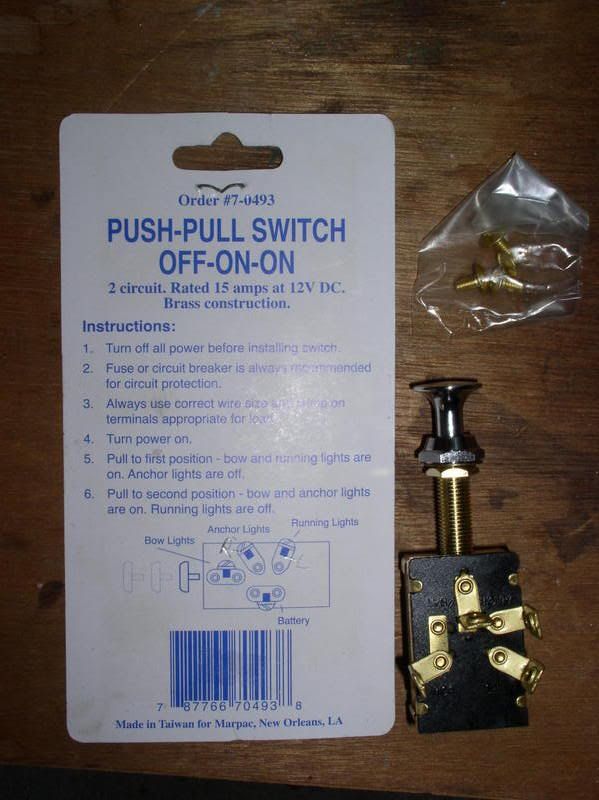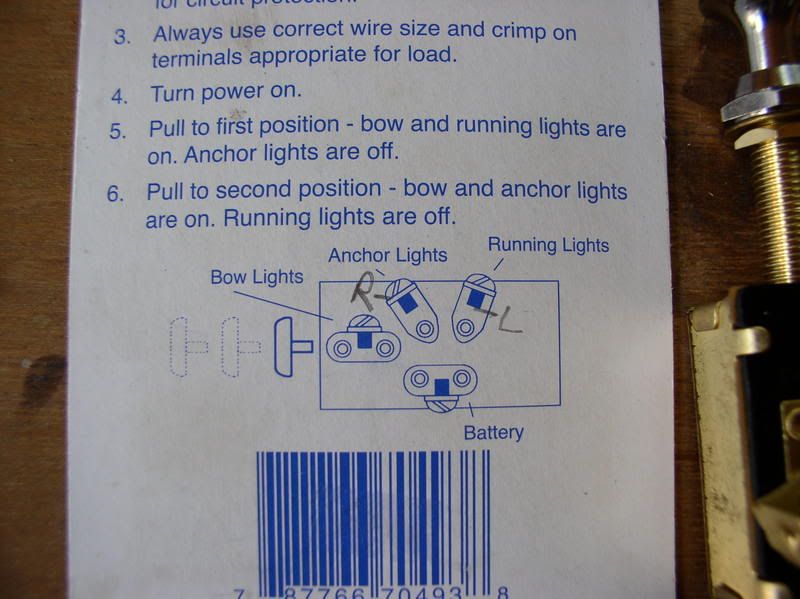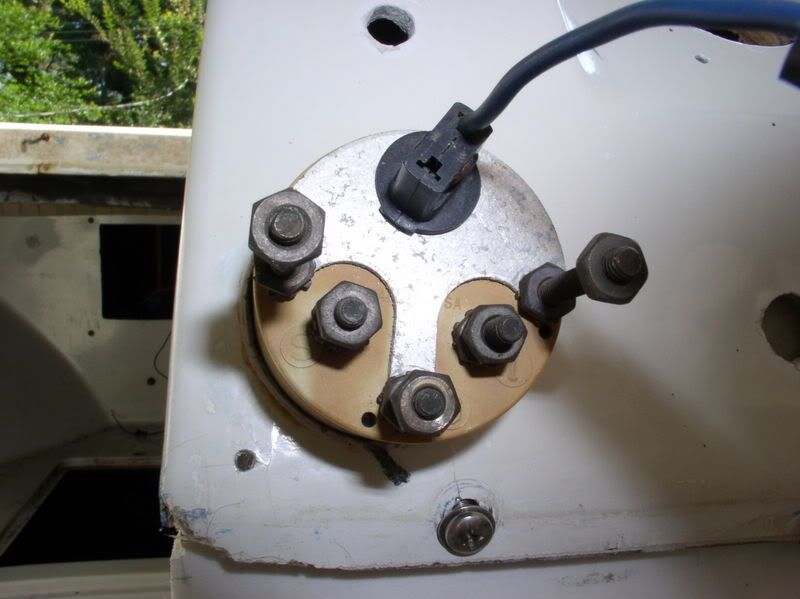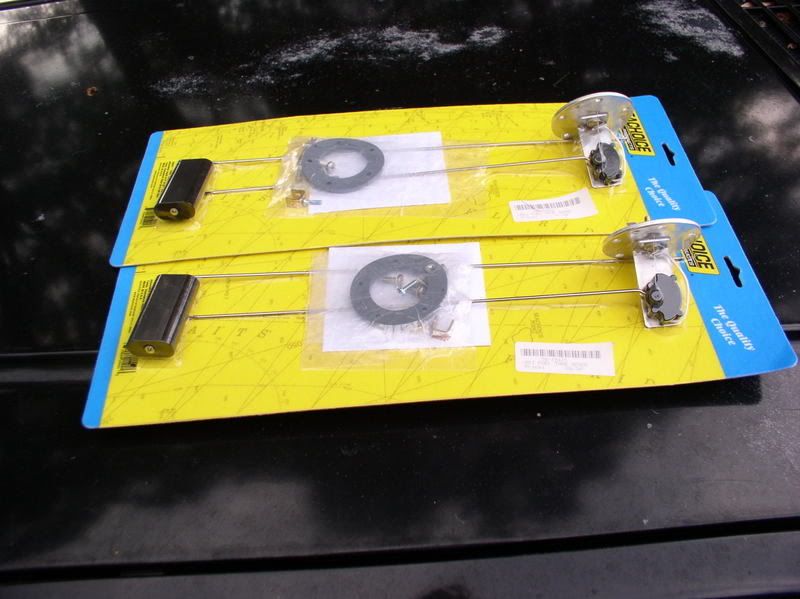Correction on the sender (unless I don't know about the newer tanks), positive wire will go directly to the gauge (terminal "I") , negetive wire will go to the gauge (terminal "G"), tank and/or sender ground, then the sender wire goes to the gauge (terminal "S").
I have 2 saddle tanks. This was the post in the thread. Yours will be easier
 Re: Specs
Re: Specs
Got most of the electronics wired but figured I***8217;d show you the gas gauge set up with two tanks and one gauge.
Needed one pull switch that had basically an off, on, on (left & right tanks).

A regular 3 terminal navigation switch won***8217;t work. This 4 terminal did fine.
Don***8217;t depend on the schematic being correct, in my case the bow lights and battery were reversed.

The gauge had terminals for ***8220;S***8221; sending unit, ***8220;G***8221; ground and ***8220;I***8221; ignition or hot and a wire to the dash light bulb.

The ***8220;I***8221; terminal is fed from the hot feeding the navigation lights switch.
The ***8220;G***8221; terminal goes to the fuse panel ground and the two sending units frame ground.
The ***8220;S***8221; terminal goes to the three position switch to the common or in this case labeled ***8220;battery***8221;.
The other two terminals on the switch go to the sending units in this case ***8220;running lights***8221; for the left tank and ***8220;anchor lights***8220; for the right tank.
The remaining terminal ***8220;bow lights***8221; is vacant.
I connected the gauge bulb to the dash light switch but I didn***8217;t connect the navigation lights in the traditional sense by the first position being anchor and the second position being all. What I did was the first position would be all exterior navigation lights and the second position would include the dash lights. This way if the dash lights caused night blindness I could simply exclude them at night. I have a bad habit running at night without lights on so as to be able to see the water.
 Re: Specs
Re: Specs
Sending units
